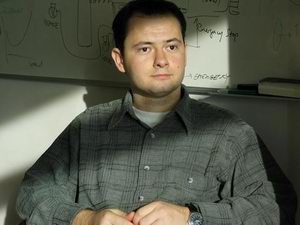

 REDANS
REDANSI am CEO of REDANS SRL where I currently lead the LINDA research and development project. My research interests include AI applied technology for industrial applications such as predictive diagnosis, object recognition and collaborative robots.
Mihai Cristea received his B.Sc. degree in Automation and Computer Science Engineering in 1999 and M.Sc. degree in Artificial Intelligence in Process Control in 2000 from the "Dunarea de Jos" University of Galati, Romania. During his Ph.D. research between 2002 and 2006 at Leiden University, he contributed to the Streamline packet processing framework at multi-gigabits speeds. From 2007 to 2012 Mihai worked as PostDoc researcher at University of Amsterdam, where he was involved in the research of UPVN programmable networks, design and development of OS for Cloud computing: manage both computational and networking resources on behalf of the applications.
|
|
The LinDA project builds a platform designed as a Cyberphysical system that provides all features needed by industrial and IIoT applications that run in Cloud. For example, industrial applications such as predictive diagnosis of equipment, remote access for interactive diagnosis, environmental monitoring for smart agriculture will cost less when running in the Cloud compared to the traditional SCADA systems running at factory sites. |
|
|
The InteliS project builds a platform designed as a Cyberphysical system that provides all features of nowadays and future connectivity, processing and scalability facilities. These facilities are currently provided by means of Industrial Internet of Things (IIoT) and Cloud computing technologies, respectively. |
|
|
The RISAN project proposes to research, design and develop a product that provides a solution to the increasing costs when integrating a distributed system for ship automation. This project includes the state-of-the-art in networks and distributed computing to provide a seamless integration of a large variety of communication protocols and networks. |
|
|
The EU-ICT Geysers project defines and implements a novel architecture, capable of provisioning Network and IT resources for end-to-end service delivery. This includes mechanisms that allow infrastructure providers to partition their resources (optical network and/or IT), compose virtual infrastructures dynamically, and offer them as a service to Virtual Infrastructure network operators. |
|
|
The Generalised Token Based Networking (gTBN) architecture enables dynamic binding of communities and their applications to specialised network services. gTBN uses protocol independent tokens to provide decoupling of authorisation from time of usage as well as identification of network traffic. The tokenised traffic allows specialised software components uploaded into network elements to execute services specific to communities. |
|
|
The Interactive Networks (Interactive Nets page) is an environment to test and develop new ideas on network visualization, analysis, network services and applications. The test bed consists of VMware virtualized infrastructures, FPGAs and commodity servers and are interconnected with a 10gbit and a 1gbit network infrastructure. In addition, programmable wireless routes and Sun Spots will be connected to the same infrastructure. Through an innovative multi-touch interface users interact with the network. We are currently working on architectural concepts and programming techniques to implement automatic network adaptation from user applications. |
|
|
Streamline/FFPF is a high-speed I/O networking subsystem for Linux. It pushes the packet processing to the fastest location and reduces copying and context switching. It takes into account caching, extensibility and new hardware. |
|
|
Software Correlator Architecture Research and Implementation for e-VLBI (SCARIe) is a Grid-based software correlator for radio-telescope images that requires high-throughput communication, but also specific services such as soft real-time or constant throughput. |
|
|
The EU-IST Phosphorus project addressed the key technical challenges to enable on-demand e2e network services across multiple domains. The Phosphorus network concept and test-bed will make applications aware of their complete Grid resources (computational and networking) environment and capabilities, and able to make dynamic, adaptive and optimized use of heterogeneous network infrastructures connecting various high-end resources. |
|
|
The EU-IST LOBSTER project developed and deployed monitoring stations across Europe. |
|
|
The EU-IST SCAMPI project is now finished. Its goal was to develop a scalable monitoring platform for Internet. |